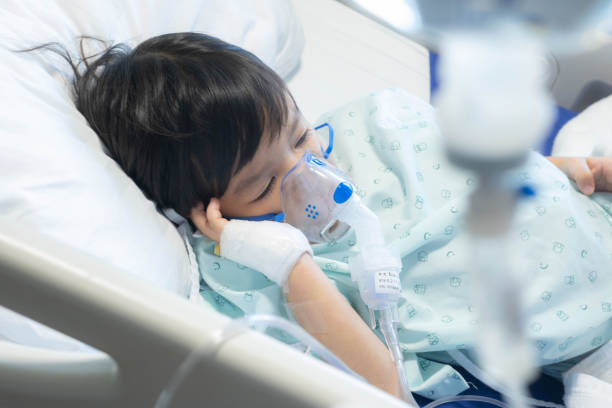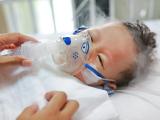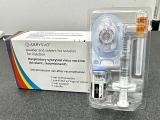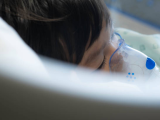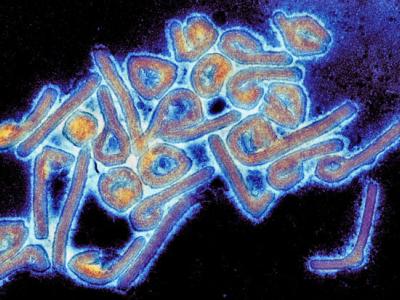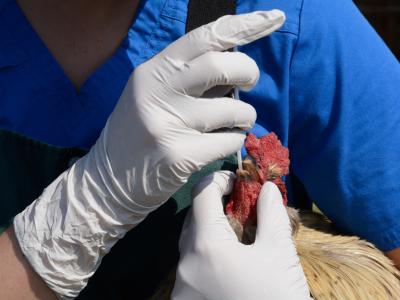A Yale University–led research team reports that high US pediatric hospital bed occupancy (bed strain) and large differences in between-hospital bed occupancy (load imbalance) were common during the 2022-23 respiratory virus season, but weren't tied to pediatric bed capacity declines since 2010.
For the study, published in JAMA Network Open, the researchers analyzed data on 254 US hospital referral regions (HRRs) with 547 total hospitals from the US Department of Health and Human Services to determine average weekly bed strain and load imbalances from September 2022 through January 2023. To measure pediatric bed capacity from 2010 to 2021, the team used American Hospital Association survey data.
Bed strain was defined as over 85% bed occupancy per week, and load imbalance occurred when at least one hospital in an HRR had 85% bed occupancy or higher, one or more had an occupancy below that threshold, and the difference between the two was at least 20%. HRRs are geographic areas that define unique healthcare market regions.
"During the 2022 respiratory viral surge, anecdotal evidence suggested that pediatric bed strain and load imbalance (hospitals in the same region experiencing disparate occupancy rates) may be linked to pediatric bed capacity changes during the preceding decade," the study authors wrote.
'Substantial' opportunity for load-balancing strategies
On average, 112 (44.1%) HRRs experienced bed strain each week during the 2022-23 season, and of 123 regions with at least two hospitals with pediatric beds, an average of 82 (66.7%) per week experienced load imbalance. Bed strain peaked at 53.5% the week of November 4 and reached its nadir (29.5%) the week of December 23.
A total of 49 (39.8%) HRRs experienced load imbalance during all 14 weeks of the study. The percentage of HRRs with pediatric load imbalance ranged from 73 (59.3%) to 88 (71.5%), peaking the week of November 4.
Among all HRRs included in the bed-strain analysis, the number of pediatric beds per 10,000 children fell from 4.57 beds in 2010 to 4.02 in 2021, a 12.0% reduction. But no link between pediatric bed capacity changes and 2022 bed strain or load imbalance was found.
In this cross-sectional study, we found a high overall prevalence of both pediatric and PICU bed strain and load imbalance during the 2022 respiratory viral season that was not associated with 2010-2021 pediatric bed capacity changes.
An analysis of bed strain among pediatric intensive care units (PICUs) showed that of 115 HRRs with at least one PICU bed, 96 (83.5%) had at least 1 week of PICU bed strain. On average, 71 HRRs (61.7%) experienced PICU bed strain in any given week, and 32 (27.8%) had strain in all 14 weeks.
The week of November 4 saw the highest number of HRRs experiencing PICU bed strain (87 of 115 [75.7%), and the week of December 23 had the lowest (60 of 115 [52.2%]).
Of the 254 HRRs included in the pediatric strain and load imbalance analysis, the number of pediatric beds per 10,000 children dropped from 4.57 in 2010 to 4.02 (a 12.0% decrease) in 2021. And of the 115 HRRs included in the analysis of PICU strain and load imbalance, the number of beds per 10,000 rose from 0.69 in 2010 to 0.80 in 2021 (a 15.9% increase).
"In this cross-sectional study, we found a high overall prevalence of both pediatric and PICU bed strain and load imbalance during the 2022 respiratory viral season that was not associated with 2010-2021 pediatric bed capacity changes," the authors concluded. "Our results suggest substantial opportunity for targeted load-balancing strategies during future pediatric hospitalization surges to be effective at reducing pediatric bed strain and harm."
'When the next surge arrives, everyone knows who to call'
In a commentary in the same journal, Kenneth Michelson, MD, MPH, of the Division of Emergency Medicine at the Ann and Robert Lurie Children's Hospital in Chicago, said that the 2022 respiratory virus season was difficult for emergency department (ED) clinicians.
"In the community, intubated children boarded in EDs largely equipped to care for adults," he wrote. "Meanwhile, staff in highly resourced children's hospitals routinely refused transfers because their own facilities were bursting at the seams, overfull with desperately ill children in respiratory failure. The moral hazard was palpable: we knew children were harmed because we could not cope with the volume."
Michelson traced the crisis to hospitals concentrating pediatric inpatient services into fewer and fewer hospitals, from 1,749 nationwide in 2008 to 1,226 in 2022, a net 30% loss.
"In rural areas, the declines were steeper, with a 54% decrease in units," he wrote. "Each of those 523 lost inpatient units could have admitted children in respiratory distress. Children's hospitals partially mitigated this by adding beds during the same period, but this did not improve the decreasing geographic accessibility of definitive pediatric care."
The situation worsened dramatically during the COVID-19 pandemic, when pediatric hospitalizations fell to 46%.
Michelson called for action to improve load balancing and maximize capacity, which he said will have fringe benefits.
"When a medical director of a children’s hospital ED and surrounding community sites are talking, those sites are empowered to draw on expertise," he concluded. "At the same time, the referral center can disseminate protocols, guidelines, best practices, and ultimately, knowledge. Soon, simulation sessions are coordinated region wide. Emergency medical services become involved. When the next surge arrives, everyone knows who to call."
